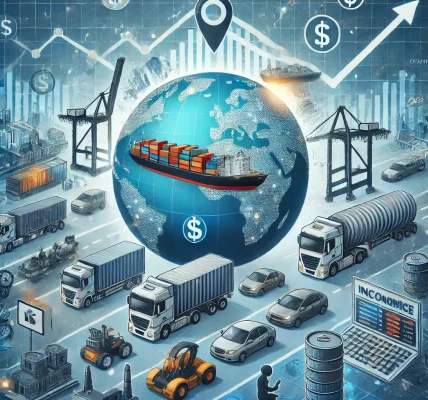Introduction
Inflation is a global economic challenge that affects everything from consumer purchasing power to business investments and government policies. As inflation rates continue to rise across the world, different countries are adopting various strategies to mitigate its impact. In this blog, we will explore global inflation trends, examine how different economies are tackling inflation, and highlight the long-term implications of these strategies.
Understanding Inflation and Its Causes
Inflation refers to the rate at which the general level of prices for goods and services rises, eroding purchasing power. Several factors contribute to inflation, including:
- Supply Chain Disruptions – Shortages of raw materials and logistical challenges drive up prices.
- Increased Demand – When demand outpaces supply, prices rise.
- Rising Energy Costs – Higher oil and gas prices lead to increased costs in transportation and production.
- Monetary Policies – Expansionary monetary policies can result in excessive money supply, leading to inflation.
- Geopolitical Conflicts – War and international tensions disrupt markets and create economic uncertainty.
Inflation Trends Across Different Regions
1. United States
The U.S. has experienced significant inflationary pressures, driven by supply chain disruptions, pandemic relief spending, and rising energy prices. The Federal Reserve has responded by:
- Raising interest rates aggressively to curb excess liquidity.
- Reducing quantitative easing measures to stabilize the economy.
- Implementing fiscal policies to control excessive government spending.
2. European Union
The Eurozone has faced inflation spikes due to energy price surges, exacerbated by the Russia-Ukraine war. The European Central Bank (ECB) has adopted measures such as:
- Raising interest rates to slow inflation growth.
- Encouraging energy diversification to reduce dependence on Russian gas.
- Providing financial relief packages to support businesses and households.
3. United Kingdom
Post-Brexit economic adjustments, coupled with global inflation, have impacted the UK economy. To combat inflation, the Bank of England has:
- Increased interest rates multiple times.
- Introduced policies to boost local production and reduce import dependency.
- Provided targeted financial aid to vulnerable households facing high energy costs.
4. China
China has maintained relatively low inflation compared to Western economies, largely due to strict regulatory measures and controlled monetary policies. Some key steps include:
- Government subsidies to stabilize essential goods prices.
- Strict monetary controls to prevent excess liquidity.
- Maintaining a strong manufacturing base to meet domestic and international demand.
5. India
India has seen moderate inflation rates, influenced by global commodity prices and local economic policies. The Reserve Bank of India (RBI) has implemented:
- Gradual interest rate hikes to control inflation.
- Food and fuel subsidies to protect vulnerable populations.
- Encouraging digital and fintech solutions to improve economic efficiency.
6. Japan
Japan has struggled with low inflation for decades but has recently seen rising prices due to global factors. The Bank of Japan has maintained:
- Low-interest rates to support economic growth.
- Currency interventions to stabilize exchange rates.
- Policies to encourage wage growth to counter inflation.
7. Developing Economies (Africa & Latin America)
Many developing economies have experienced high inflation due to weak currencies, reliance on imports, and external debt. Measures taken include:
- Strengthening domestic industries to reduce import reliance.
- Adopting digital currencies and alternative trade mechanisms.
- Negotiating international financial aid to stabilize economies.
The Impact of Inflation Control Measures
While governments and central banks implement strategies to curb inflation, these policies come with potential consequences:
- Higher Interest Rates – Can slow down economic growth and increase borrowing costs.
- Subsidies and Relief Packages – Help citizens but may strain government finances.
- Currency Controls – Can stabilize inflation but may limit foreign investments.
Long-Term Strategies to Address Inflation
To sustain economic stability, countries are focusing on long-term strategies such as:
- Investing in Renewable Energy – Reducing dependence on volatile fossil fuel prices.
- Strengthening Local Manufacturing – Minimizing reliance on imports and global supply chains.
- Encouraging Digital Economies – Improving efficiency and financial inclusion through technology.
- Diversifying Trade Partners – Reducing dependence on any single country or region for essential imports.
Conclusion
Inflation is a complex economic phenomenon that requires a balanced approach to manage. While different countries adopt varied strategies, a combination of monetary policies, fiscal discipline, and long-term economic reforms is essential for sustainable inflation control. By learning from global approaches, governments can refine their strategies and ensure economic stability for future generations.
By staying informed and adapting to changing economic conditions, businesses and individuals can make smarter financial decisions to navigate inflationary periods effectively.




